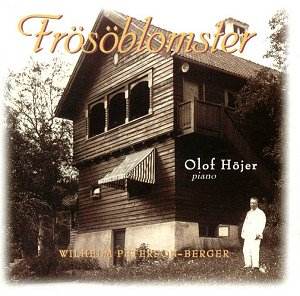Everything
you’ve ever heard about Peterson-Berger’s piano music – if you’ve
ever heard anything about it – is true. Whereas the symphonies,
though attractive, want for real symphonic profile, in his piano
miniatures the sheer untrammelled romantic lyricism that so saturates
his music emerges unmediated by striving or grandiloquence. This
is a disc of pastoral bedecked pleasures, its open-hearted effulgence
occasionally joined by moments of unease and incipient tristesse.
But, mostly, all is well and the earliest of the Books, written
in 1896, catches him at his freshest and most winning. Peterson-Berger
was twenty-nine when the first Book was published and, dangerously,
a music critic.
Opening
warmly, the first book embraces late Romantic lyricism and Grieg-influenced
subtleties of infection – harmonic and otherwise – and Chopinesque
directness (try the fourth in the first book Till rosorna
and you’ll be puzzling who could have written it) as well as an
avuncular little gavotte and the limpid nobility and concentrated
grandeur of the sixth. Cleverly Peterson-Berger rounds off the
first cycle of miniatures with an affable but somewhat sad Hälsning
that seems pretty clearly related to the opening piece and adduces
another, deeper level of meaning to the work. The second book
followed four years later and is comprised of six miniatures,
again starting with a confident opener, and stresses the hymnal
and meditative air with increasing regularity. There’s forest
music as well with elfin folk music trio sections and real elastic
pliancy in the last two of the set. The Third Book (1914) was
inspired by a house he had built which he called Sommerhagen.
As the pianist hammers away we become aware that Peterson-Berger
is actually depicting the nailing and hammering of his sommerhagen
and the Förspel takes on something of a riotous air. But
he can’t escape pianistic nobility of utterance for long and his
Schumannesque-Grieg inheritance is most explicit in the second
of the set. There’s colour, emphasised through depth of bass tone,
and also witty and amusing folk dances and, as the Book comes
to a close, a quiet calm, a heat haze stasis.
Really
fine performances by Olof Höjer are happily complemented
by his own sleeve notes and the natural perspective – warm, not
cloying – of the recording. Not to be taken in one go, maybe,
but a book at a time. There’s much here that is treasurable.
Jonathan
Woolf
